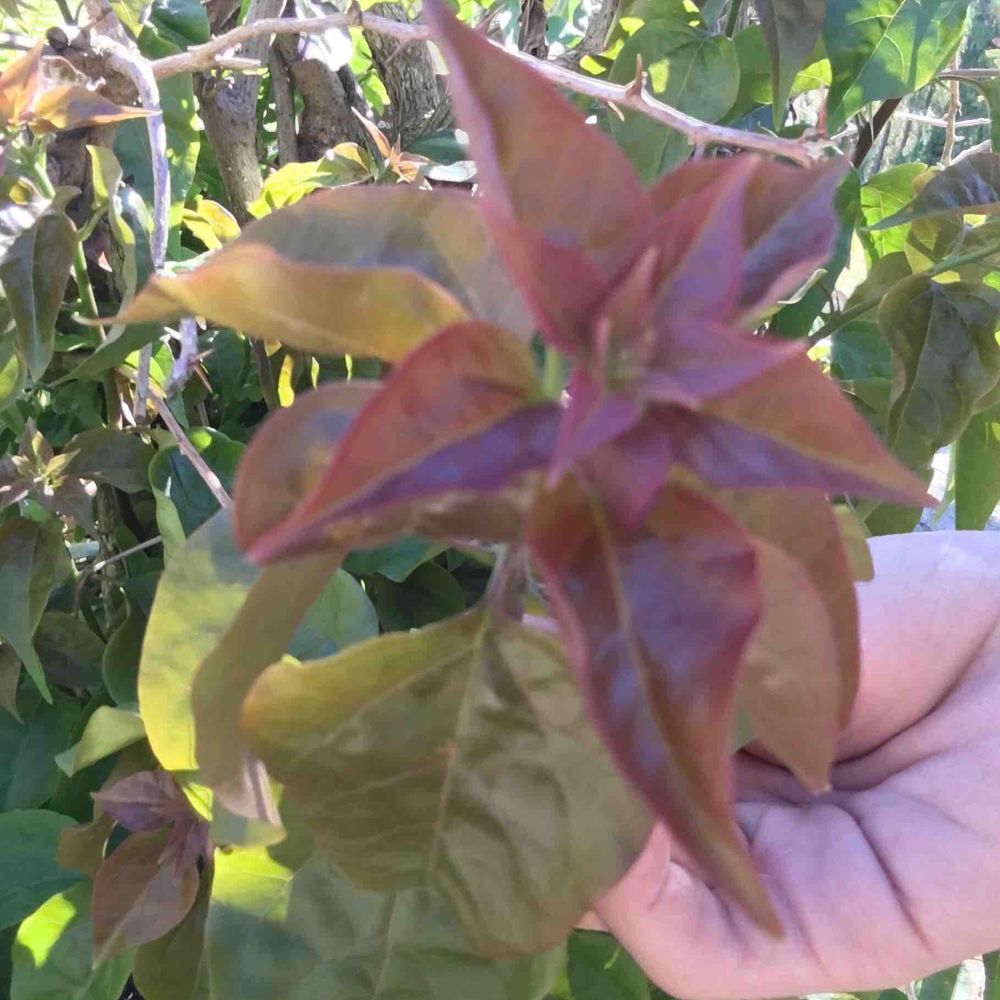Bougainvillea
(Bougainvillea)

Description
Bougainvillea glabra: A Comprehensive Guide Introduction: Bougainvillea glabra, also known as the "Paper Flower" or "Lesser Bougainvillea," is a species of flowering plant that is native to South America but has since been introduced and naturalized in other warm regions of the world. This flowering vine is well known for its vibrant and colorful bracts that bloom profusely, making it a popular choice for use in landscaping and ornamental gardening. Taxonomy: Bougainvillea glabra is a member of the Nyctaginaceae family and is closely related to other species in the Bougainvillea genus. The scientific name for this species is derived from the name of the French explorer Louis-Antoine de Bougainville, who discovered the plant on his voyage around the world in the late 1700s. Description: Bougainvillea glabra is a woody, evergreen vine that can grow up to 20 feet in length. Its leaves are small and elliptical, with a glossy, dark green appearance. The plant's most striking feature is its colorful bracts, which come in shades of pink, red, orange, yellow, and purple. The bracts surround the small, white flowers of the plant, making them the main source of color and visual appeal. Cultivation: Bougainvillea glabra is well adapted to warm, tropical climates, and requires full sun exposure to flourish. The plant is relatively drought-resistant and can grow in a variety of soils, but prefers well-draining, slightly acidic soil. It is also important to provide adequate support for the plant, as it can become heavy and cause damage to structures if not properly trained or staked. Pruning is important to maintain the plant's size and shape, and to encourage new growth and more blooms. Bougainvillea glabra should be pruned back to the desired shape after each blooming cycle, typically in late winter or early spring. Uses: Bougainvillea glabra is often used as an ornamental plant for its colorful and showy blooms. It is often grown on trellises, fences, or arbors, where it can be trained to climb and spread. In addition, it can be grown in pots or as a hanging plant, making it an ideal choice for adding color to balconies, patios, or other outdoor spaces. The plant is also commonly used in landscaping and can be trained to form a hedge or screen. When grown in mass plantings, the colorful bracts of Bougainvillea glabra create a stunning display and can be used to add a tropical feel to any garden or outdoor space. Conclusion: In conclusion, Bougainvillea glabra is a vibrant and colorful flowering vine that is well adapted to warm, tropical climates. With its showy blooms, adaptability, and ease of cultivation, it is a popular choice for use in landscaping, ornamental gardening, and as a patio or balcony plant. Whether grown on a trellis, fence, or in a pot, this plant is sure to add a tropical touch of color and beauty to any outdoor space. Bougainvillea Genus Bougainvillea is a genus of thorny ornamental vines, bushes, and trees with flower-like spring leaves near its flowers. Different authors accept between four and 18 species in the genus. They are native plants of, South America from Brazil west to Ecuador and south to southern Argentina (Chubut Province). Bougainvillea are also known as buganvilla (Spain), bugambilia (Mexico, Guatemala, Cuba, Philippines), bouganvilla (India), pokok bunga kertas (Indonesia), "'bougenville"' (Pakistan), Napole-n (Honduras), jahanamiya (Arab World), veranera (Colombia, Nicaragua, El Salvador, Costa Rica and Panama), trinitaria (Colombia, Panama, Puerto Rico, Dominican Republic & Venezuela), Santa Rita (Argentina, Bolivia, Brazil, Paraguay and Uruguay) or papelillo (northern Peru). The vine species grow anywhere from 1 to 12 m (3 to 40 ft.) tall, scrambling over other plants with their spiky thorns. The thorns are tipped with a black, waxy substance. They are evergreen where rainfall occurs all year, or deciduous if there is a dry season. The leaves are alternate, simple ovate-acuminate, 4-13 cm long and 2-6 cm broad. The actual flower of the plant is small and generally white, but each cluster of three flowers is surrounded by three or six bracts with the bright colours associated with the plant, including pink, magenta, purple, red, orange, white, or yellow. Bougainvillea are relatively pest-free plants, but they may suffer from worms, snails and aphids. The larvae of some Lepidoptera species also use them as food plants, for example the giant leopard moth (Hypercompe scribonia).
Taxonomic tree:







